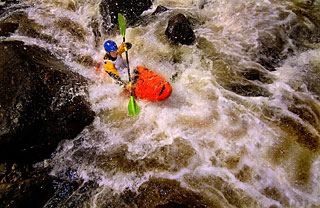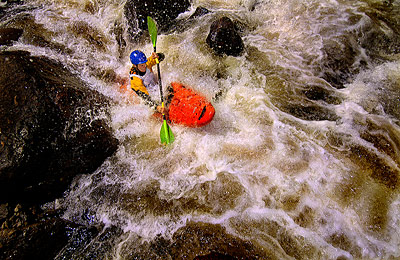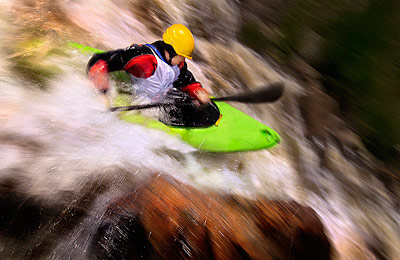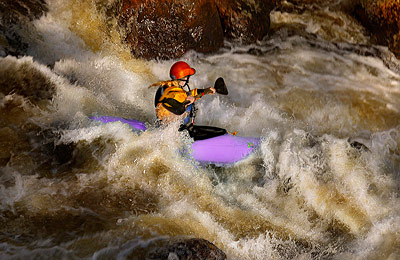 Hi and welcome to this edition of Workshop at the Ranch. Seems like I’m never finished. Seems like I’m always working. Seems like I’m always pushing myself. I think that is because I believe I can improve. I want my pictures to be unique, not average. I think that learning is often times the result of a person having the courage to risk failure.
Hi and welcome to this edition of Workshop at the Ranch. Seems like I’m never finished. Seems like I’m always working. Seems like I’m always pushing myself. I think that is because I believe I can improve. I want my pictures to be unique, not average. I think that learning is often times the result of a person having the courage to risk failure.
I have written several articles on how to use the Nikon SB800 Speedlights. I have received more emails regarding the Nikon SB800 Speedlights than any other topic I have illustrated in Workshop at the Ranch. Here are some examples of Sports Action were the use of the Nikon SB800 Speedlight made a significant difference, ….and so, with the Teva Mountain games as the subject let’s see how the SB800 helped raise the level of my images from average to …usable …to unique ……………….
Hi and welcome to this edition of Workshop at the Ranch. Seems like I’m never finished. Seems like I’m always working. Seems like I’m always pushing myself. I think that is because I believe I can improve. I want my pictures to be unique, not average. I think that learning is often times the result of a person having the courage to risk failure.
I have written several articles on how to use the Nikon SB800 Speedlights. I have received more emails regarding the Nikon SB800 Speedlights than any other topic I have illustrated in Workshop at the Ranch. Here are some examples of Sports Action were the use of the Nikon SB800 Speedlight made a significant difference, ….and so, with the Teva Mountain games as the subject let’s see how the SB800 helped raise the level of my images from average to …usable …to unique ……………….
|
 Image #1 You Solve The Problem … Harsh Noon sunshine can make the photographer’s life difficult especially if their editor needs to see the athletes face. If I set my exposure for the highlights (the white water) then the white water looks fine but my subjects face will be underexposed by almost 2 stops. Great water but no face. The solution is to add my own light to reveal the kayaker’s face, but this is not a motionless portrait but a fast action sport and small hotshoe mounted strobes use a shutter sync speed of only 1/250 which is not fast enough to freeze all the fast action. The Nikon SB800 will sync at shutter speeds up to 1/8000 and allow me to light my subject in a sun lit environment. I can also adjust the spread of light to cover a wide spread 12mm view spread to a narrow spread of 105mm. The i-TTL mode keeps the illumination of my subject consistent even while my subject is moving. These three capabilities are key in making a very difficult situation a successful shoot. In this image I set my exposure for the highlight (the white water) ISO100, 1/1600 at f4.5. This exposure would be perfect for the white water but will leave my subjects face and chest in shadow. This exposure will also leave the boulders and dark areas of water underexposed by 1 stop (that part I like). I used one Nikon SB800 zoomed to 105mm with a power output of +1 on the hotshoe of my Nikon D2X. I used a Nikon 12-24mm lens. My kayaker is about 20 feet away from me. I achieved a higher angel of view by placing my D2X on my monopod and extending it out and over the kayaker like a hand held boom arm. I used a Pocket Wizard Multi Max Transceiver with an N90 M3-P cord to trigger the camera. The SB800 added enough light to illuminate my subjects face, chest and kayak, with an almost spotlight effect. I shot 3 frames as the kayaker went by. Each frame was perfectly lit even though my subject was advancing towards me (thanks to i-TTL). An average image was made usable and more interesting by using one light, but a light that allowed me to use a high shutter speed of 1/1600, narrow the spread of light to an almost spot-lit effect and i-TTL consistently lit my advancing subject for each frame that I shot. Nikon D2X, ISO100, 1/1600 at f4.5, Nikon 12-24mm Lens, WB 6700K, One SB800 Zoomed to 105mm with Power Output of +1 on the hotshoe, Gitzo Carbon Fiber Monopod, Pocket Wizard Multi Max Transceiver with N90 M3-P cord, Lexar 4G Flash Card, Life Vest. Image #1 You Solve The Problem … Harsh Noon sunshine can make the photographer’s life difficult especially if their editor needs to see the athletes face. If I set my exposure for the highlights (the white water) then the white water looks fine but my subjects face will be underexposed by almost 2 stops. Great water but no face. The solution is to add my own light to reveal the kayaker’s face, but this is not a motionless portrait but a fast action sport and small hotshoe mounted strobes use a shutter sync speed of only 1/250 which is not fast enough to freeze all the fast action. The Nikon SB800 will sync at shutter speeds up to 1/8000 and allow me to light my subject in a sun lit environment. I can also adjust the spread of light to cover a wide spread 12mm view spread to a narrow spread of 105mm. The i-TTL mode keeps the illumination of my subject consistent even while my subject is moving. These three capabilities are key in making a very difficult situation a successful shoot. In this image I set my exposure for the highlight (the white water) ISO100, 1/1600 at f4.5. This exposure would be perfect for the white water but will leave my subjects face and chest in shadow. This exposure will also leave the boulders and dark areas of water underexposed by 1 stop (that part I like). I used one Nikon SB800 zoomed to 105mm with a power output of +1 on the hotshoe of my Nikon D2X. I used a Nikon 12-24mm lens. My kayaker is about 20 feet away from me. I achieved a higher angel of view by placing my D2X on my monopod and extending it out and over the kayaker like a hand held boom arm. I used a Pocket Wizard Multi Max Transceiver with an N90 M3-P cord to trigger the camera. The SB800 added enough light to illuminate my subjects face, chest and kayak, with an almost spotlight effect. I shot 3 frames as the kayaker went by. Each frame was perfectly lit even though my subject was advancing towards me (thanks to i-TTL). An average image was made usable and more interesting by using one light, but a light that allowed me to use a high shutter speed of 1/1600, narrow the spread of light to an almost spot-lit effect and i-TTL consistently lit my advancing subject for each frame that I shot. Nikon D2X, ISO100, 1/1600 at f4.5, Nikon 12-24mm Lens, WB 6700K, One SB800 Zoomed to 105mm with Power Output of +1 on the hotshoe, Gitzo Carbon Fiber Monopod, Pocket Wizard Multi Max Transceiver with N90 M3-P cord, Lexar 4G Flash Card, Life Vest.
|
 Image #2 Don’t Be Satisfied … These competitive white water rafters are about 60 feet away from the boulder I’m sitting on. Similar to image #1, this image is shot at High Noon. Without additional light, my subjects would be in shadow if I expose for the white water. This time I used 4 SB800 Speedlights to reveal my subjects from the shadows. The 4 SB800s were place on a boulder to the rafter’s right …. about 60 feet away from them and about 40 feet away from me. I used a Nikon SU800 Commander to trigger the Remote SB800s. Nothing fancy here, I just placed the SB800s on the boulder so the censor of each unit was facing my shooting location 40 feet away. I zoomed each SB800 to 85mm. My exposure is set for the highlights of white water, ISO100, 1/1600 at f4.5. I shot a few test images of forerunners (forefloaters I guess) and looked at the LED Screen to determine how much power output was required. I adjusted the power output wirelessly from the SU800 Commander on the cameras hotshoe. The SU800 Commander has two channels and a digital slider switch to increase or decrease the power output of remote SB800s. All 4 remote SB800s were grouped together so I used only the “A” channel and set the power output at +3. The Speedlights easily lit the five rafters, their raft and the surrounding water with light and gave me a very fast recycle time that allowed me to capture 3 frames of perfectly lit rafters as they raced by me towards the finish. An important feature of the Nikon SU800 is that there is no pre-flash delay in i-TTL mode like when using an SB800 as the Master. I press the shutter release button and the remote SB800s flash instantly with no pre-flash delay. Nikon D200, ISO100, 1/1600 at f4.5, Nikon 70-200mm G VR Zoom Lens, WB 6700K, 4 Nikon SB800 Speedlights set on Remote with a Power Output of +3, Nikon SU800 Commander, Lexar 4G Flash Card, Life Vest. Here again I chose to try something no one else was doing in an effort to produce a different/better image. By adding additional light I easily revealed my subjects from high noon shadows and froze all the action and flying water with a fast 1/1600 shutter speed. Image #2 Don’t Be Satisfied … These competitive white water rafters are about 60 feet away from the boulder I’m sitting on. Similar to image #1, this image is shot at High Noon. Without additional light, my subjects would be in shadow if I expose for the white water. This time I used 4 SB800 Speedlights to reveal my subjects from the shadows. The 4 SB800s were place on a boulder to the rafter’s right …. about 60 feet away from them and about 40 feet away from me. I used a Nikon SU800 Commander to trigger the Remote SB800s. Nothing fancy here, I just placed the SB800s on the boulder so the censor of each unit was facing my shooting location 40 feet away. I zoomed each SB800 to 85mm. My exposure is set for the highlights of white water, ISO100, 1/1600 at f4.5. I shot a few test images of forerunners (forefloaters I guess) and looked at the LED Screen to determine how much power output was required. I adjusted the power output wirelessly from the SU800 Commander on the cameras hotshoe. The SU800 Commander has two channels and a digital slider switch to increase or decrease the power output of remote SB800s. All 4 remote SB800s were grouped together so I used only the “A” channel and set the power output at +3. The Speedlights easily lit the five rafters, their raft and the surrounding water with light and gave me a very fast recycle time that allowed me to capture 3 frames of perfectly lit rafters as they raced by me towards the finish. An important feature of the Nikon SU800 is that there is no pre-flash delay in i-TTL mode like when using an SB800 as the Master. I press the shutter release button and the remote SB800s flash instantly with no pre-flash delay. Nikon D200, ISO100, 1/1600 at f4.5, Nikon 70-200mm G VR Zoom Lens, WB 6700K, 4 Nikon SB800 Speedlights set on Remote with a Power Output of +3, Nikon SU800 Commander, Lexar 4G Flash Card, Life Vest. Here again I chose to try something no one else was doing in an effort to produce a different/better image. By adding additional light I easily revealed my subjects from high noon shadows and froze all the action and flying water with a fast 1/1600 shutter speed. |
 Image #3 Push Yourself To Learn … Image #3 Push Yourself To Learn … Here is a similar situation as in Images 1 and 2 with more extreme problems. Backlit white water and high speed sports action. If I expose for my subject, then the white water will be terribly over exposed. If I use a fast shutter speed to freeze the action of the flipping kayaker he will be under exposed in shadowed silhouette. The solution is to reveal my subject with additional light. I set my exposure for the white water highlights using the flashing highlights mode (“take a shot … take a look.”) using the LED screen. I also wanted a fast shutter speed to freeze the kayaker and water spray perfectly when he flipped upside down. I set my exposure for ISO200, 1/2500 at f4. I used 4 SB800 Speedlights as remotes and set them on a rock next to me. I used my Nikon SU800 Commander to wirelessly trigger the remote SB800s. I set the power output at +3 . The SB800s easily revealed my kayaker from shadowed silhouette. My power recycle time was very quick and with fresh Energizer E2 Lithium batteries in the remote SB800s I could shoot every few seconds. Nikon D200, ISO200, 1/2500 at f4, Nikon 70-200 G VR Zoom Lens, 4 Nikon SB800 Speedlights as Remotes with a Power Output of +3, Nikon SU800 Commander, Lexar 4G Flash Card, Life Vest. By using the Nikon SB800 Speedlights I was able to reveal my subject from a shadowed silhouette and could do so using a fast shutter / sync speed of 1/2500 which enabled me to expose for the highlights thus preserving the backlit white water.
|
 Image #4 Get Creative … I wanted some artistic panned action of the event but also wanted to freeze some of the subject and water. High Noon sunlight directly overhead again. I exposed for the highlights of the white water (easy to do using the flashing highlights on the LED screen … take a shot, take a look.) I set the exposure at ISO100, 1/30 at f22. This left the forest lined bank of the river under exposed and made a beautiful dark green background. This slower shutter speed of 1/30 will help illustrate the speed that the kayakers are moving down river and over the water fall on their way to the finish. My D2X is equipped with a Nikon SB800 Speedlight on the hotshoe and is zoomed to 105mm with a power output of +0.3. I hand held the camera and panned with my subject as he raced by me. The kayaker is about 15 feet away and was easy for the SB800 to fill in light on my subject, the edge of the boulder and splashing water. The slow shutter and pan created plenty of motion in the background and surrounding water while the SB800 froze the kayakers head, shoulders and kayak water skirt along with droplets of flying water. Nikon D2X, ISO100, 1/30 at f22, Nikon 17-55mm Lens, WB 7100K, Rear Curtain Sync, Nikon SB800 Speedlight on Hotshoe, zoomed to 105mm, Power Output +0.3, Lexar 4G Flash Card, Life Vest. Image #4 Get Creative … I wanted some artistic panned action of the event but also wanted to freeze some of the subject and water. High Noon sunlight directly overhead again. I exposed for the highlights of the white water (easy to do using the flashing highlights on the LED screen … take a shot, take a look.) I set the exposure at ISO100, 1/30 at f22. This left the forest lined bank of the river under exposed and made a beautiful dark green background. This slower shutter speed of 1/30 will help illustrate the speed that the kayakers are moving down river and over the water fall on their way to the finish. My D2X is equipped with a Nikon SB800 Speedlight on the hotshoe and is zoomed to 105mm with a power output of +0.3. I hand held the camera and panned with my subject as he raced by me. The kayaker is about 15 feet away and was easy for the SB800 to fill in light on my subject, the edge of the boulder and splashing water. The slow shutter and pan created plenty of motion in the background and surrounding water while the SB800 froze the kayakers head, shoulders and kayak water skirt along with droplets of flying water. Nikon D2X, ISO100, 1/30 at f22, Nikon 17-55mm Lens, WB 7100K, Rear Curtain Sync, Nikon SB800 Speedlight on Hotshoe, zoomed to 105mm, Power Output +0.3, Lexar 4G Flash Card, Life Vest.
|
 Image #5 Break Away from the Average … I arrived very early on the last day of competition. The sun had not yet reached the river. I saw this as a great opportunity to really break away from the average picture. I knew kayakers were preparing to make some practice runs before the start of competition so I put on my Life Vest and scrambled down to the river bank to an area that looked incredibly torrent. I set up my 4 Nikon SB800 as Remotes on some boulders and aimed them across the rapids and rocks in an effort to create shafts of light that the kayakers would pass through. I made sure all SB800 sensors where facing my shooting location high on the bank above the river about 70 feet away. This is similar to the rafting set up with the exception of aiming the speedlights to skip light across the rapids rather than concentrate one broad area. I wanted the river to be under exposed so the shafts of SB800 light would be dramatic. I also wanted an almost Holga camera-ish look of edge softness with some motion blur. A shutter speed of 1/100 would allow the rapids to have motion so I took a shot and took a look ………. ISO100, 1/100 at f8 left the river about 1 stop under exposed. The light from the remote SB800s would reveal my subject and freeze the raging water. I turned on my SU800 Commander and took a shot, took a look to determine a power output of +1 would be perfect and waited for the first kayaker to take a practice run before the sun reached the river. I love the shafts of light that illuminate the crest of the individual rapids. The 1/100 shutter speed is just slow enough to allow some motion blur yet the SB800s freeze areas of the water and the kayaker. Rear Curtain sync gives my subject a very unique dreamlike motion yet frozen by the SB800s while the water that falls into the shadows has a soft blurred motion that resembles images taken with an old Holga camera. Nikon D200, ISO100, 1/100 at f9, Nikon 17-55mm Lens, WB 8300K, Rear Curtain Sync, 4 Nikon SB800 Speedlights Zoomed to 105mm with a Power Output of +1, Lexar 4G Flash Card, Life Vest. Image #5 Break Away from the Average … I arrived very early on the last day of competition. The sun had not yet reached the river. I saw this as a great opportunity to really break away from the average picture. I knew kayakers were preparing to make some practice runs before the start of competition so I put on my Life Vest and scrambled down to the river bank to an area that looked incredibly torrent. I set up my 4 Nikon SB800 as Remotes on some boulders and aimed them across the rapids and rocks in an effort to create shafts of light that the kayakers would pass through. I made sure all SB800 sensors where facing my shooting location high on the bank above the river about 70 feet away. This is similar to the rafting set up with the exception of aiming the speedlights to skip light across the rapids rather than concentrate one broad area. I wanted the river to be under exposed so the shafts of SB800 light would be dramatic. I also wanted an almost Holga camera-ish look of edge softness with some motion blur. A shutter speed of 1/100 would allow the rapids to have motion so I took a shot and took a look ………. ISO100, 1/100 at f8 left the river about 1 stop under exposed. The light from the remote SB800s would reveal my subject and freeze the raging water. I turned on my SU800 Commander and took a shot, took a look to determine a power output of +1 would be perfect and waited for the first kayaker to take a practice run before the sun reached the river. I love the shafts of light that illuminate the crest of the individual rapids. The 1/100 shutter speed is just slow enough to allow some motion blur yet the SB800s freeze areas of the water and the kayaker. Rear Curtain sync gives my subject a very unique dreamlike motion yet frozen by the SB800s while the water that falls into the shadows has a soft blurred motion that resembles images taken with an old Holga camera. Nikon D200, ISO100, 1/100 at f9, Nikon 17-55mm Lens, WB 8300K, Rear Curtain Sync, 4 Nikon SB800 Speedlights Zoomed to 105mm with a Power Output of +1, Lexar 4G Flash Card, Life Vest. |
These examples illustrate the experimentation and learning I put myself through over the three day event. Each day I stretched the way this sport had been photographed in the past in an effort to produce an image beyond average ….an image that is more unique and exciting. I learned a lot and will apply this new knowledge to many other projects. Today technology in the photographic industry is helping the photographer do things in very new ways. Something as simple as being able to use a flash with fast shutter / sync speeds of up to 1/8000 enables the photographer to produce something new. My suggestion is to make yourself do something different, experiment and push yourself to produce something beyond the average to the creative and unique.
I hope you all have enjoyed this edition ……………….. See you next time at Workshop at the Ranch.
Adios. Dave
![]() Hi and welcome to this edition of Workshop at the Ranch. Seems like I’m never finished. Seems like I’m always working. Seems like I’m always pushing myself. I think that is because I believe I can improve. I want my pictures to be unique, not average. I think that learning is often times the result of a person having the courage to risk failure.
Hi and welcome to this edition of Workshop at the Ranch. Seems like I’m never finished. Seems like I’m always working. Seems like I’m always pushing myself. I think that is because I believe I can improve. I want my pictures to be unique, not average. I think that learning is often times the result of a person having the courage to risk failure.






